Well – instead of building up to the best photo in this post, I opened with it. It shows the long-demolished Codornices Club clubhouse, on the top of the eastern hill above the start of the concrete slide. Once upon a time, Codornices Park was Codornices Canyon. The full name of the canyon was El Valle de Los Codornices, named by Don Jose Domingo Peralta in the 1840s “Codornices” is Spanish for quail.
From 1912 until 1928, there was a 275-foot-long wooden trestle spanning the creek and canyon for streetcar and car traffic. The trestle was razed, and in 1928-1929 the span was filled with dirt separating what today is Codornices Park and what today is the Rose Garden.
But we are getting ahead of ourselves.
The east side of the trestle/Euclid Avenue was developed first. In 1913, a group of neighbors formed the Codornices Club and developed the park. The Club presented plays, concerts, dramatic readings, and dramatic recitations.
In 1916, the Club built the clubhouse on the top of the hill.
Bernard Maybeck is sawing in the left foreground of this photo. Several sources “attribute” the design of the clubhouse to Maybeck, but it is an unverified attribution. This photograph verifies that he played some role in its construction.
On the western side of the canyon, the Civil Workers Administration funded construction of the Rose Garden starting in 1932. Funding in subsequent years came from the California State Relief Administration and the federal government’s Works Progress Administration. East Bay rose societies and Berkeley neighbors helped construction and the planting of more than a thousand rose bushes of many colors and varieties. Native rock quarried in the Berkeley hills was used to form the amphitheater walls and terraced rose beds.
Suggestions for design of the redwood pergola are “attributed” to Maybeck, with credit for the final design given to city landscape architect Vernon M. Dean and C. V. Covell, president of the American Rose Society. The Rose Garden opened in 1937.
Shortly before the opening, WPA workers throughout the Bay Area went on strike for higher wages. At the Rose Garden project, the entire quota of 38 WPA workers called a halt, and the garden work and the remodeling of the Codornices clubhouse were temporarily abandoned.
Martin St. John, whose encore career is as a nurseryman at East Bay Nursery, lived in a cottage next to the Codornices Club clubhouse as a boy. He says:
We moved to the cottage when my mother (Mary St. John) was hired to manage the clubhouse for the Berkeley Recreation Department in circa 1948 and our family, (mom, dad and my older brother Leo Jr.) lived in the two bedroom cottage there until 1960 when the building was condemned and coincidently I graduated from St. Mary’s High School. I was 6 when we moved in and 19 when we left.
I remember the Codornices Club met there as did Troop 23 of the Boy Scouts of which I became a member. I also remember that a group called the Garfield Folk Dancers met there as well. Of course there were lots of weddings and other events during that time. I do remember being burglarized and my father (Leo St. John), a Berkeley Police Officer, had his service revolver stolen in the burglary. It was presented to him on his retirement from the force after it had been recovered in Redding years later.
What a place to live for a young boy!
Mostly I remember that the playground had a Recreation Department director after school and during the summers. My mother let me build a ham radio shack in an unused dressing room upstairs where I could talk with other ham radio operators. I also remember that the Recreation and Parks Department assigned a gardener to the park full time as well as a full time rosarian to the Rose Garden across the street. The gardener had his office in a room under the main floor of the building.
I had lots of friends and we played all over the park. All the usual kid games from hide and seek, to various forms of ball tag to climbing trees and playing basketball all year long. I remember playing catch with my dad and older brother. At that time you could climb into the tunnels that carried both branches of Codornices Creek to the Rose Garden. I never made it all the way but it was fun to challenge yourself to see how far you could go in that pitch black darkness. I think one of the biggest differences is that what is now Jane Hammond Softball Field was part of the Codornices Reservoir. It was a large open reservoir operated by EBMUD. It was fenced and closed off but was as big as a small lake. There was a softball field where the basketball court now is. There was a pole vaulting pit near the bottom of the current slide.
I have found no photos of the interior of the clubhouse. Martin St.John remembers this about the floor plan:
The entrance to the building was at the head of the stairs now leading to the cement slide. Continue up the steps you will pass a flagpole on your left and just above it a landing that was the entrance. As you entered the building you first came to a small reception area with a ladies restroom on the left and I believe a mens room on the right. Then you continued into the main hall. I would guess the main hall was around 40′ by 40′ at least. It was quite large and had wood floors. Against the west wall, next to where you entered was a large walk-in fireplace of stone with cement apron (Maybeck touch, I would imagine). Next to it on its right was a large storage shelf for wood also part of the concrete and stone fireplace. On the south side of the main hall was a step up to what was called the rotunda, a large semi circular wood floored area about half the size of the main hall entirely of floor to ceiling windows that looked out on to the park, the city and the bay beyond. At the north end of the hall was a large elevated stage for performances (also sounds like Maybeck). The stage was elevated above the main hall by about 4′. The stage was probably 20′ wide and almost as deep. Stairs at either end of it led up to it from the main floor. Looking at the stage, in the back far right corner was a large dressing room for performers. There was another one up stairs above if needed. (A corner of it became my radio shack). On the east wall was the entrance to the kitchen which was outfitted with large stove, sink, and counters. I don’t remember it having a fridge. There was an outside entrance directly to the kitchen. To the left at the north end of the kitchen was a hall leading to the dressing room and stairs to the other dressing room above and to a small loading area in the back of the hall. This allowed users direct access to the dressing room and kitchen. Because the clubhouse was built on a slope, the front of the building was well above the ground allowing for another set of restrooms below the rotunda as well as the gardener’s room. It was actually a beautiful building. Today there would be a riot if the city tried to demolish it.
The clubhouse survived into the 1970s.
A few traces of the foundation can still be seen in the meadow at the top of the hill that marks where the clubhouse was.
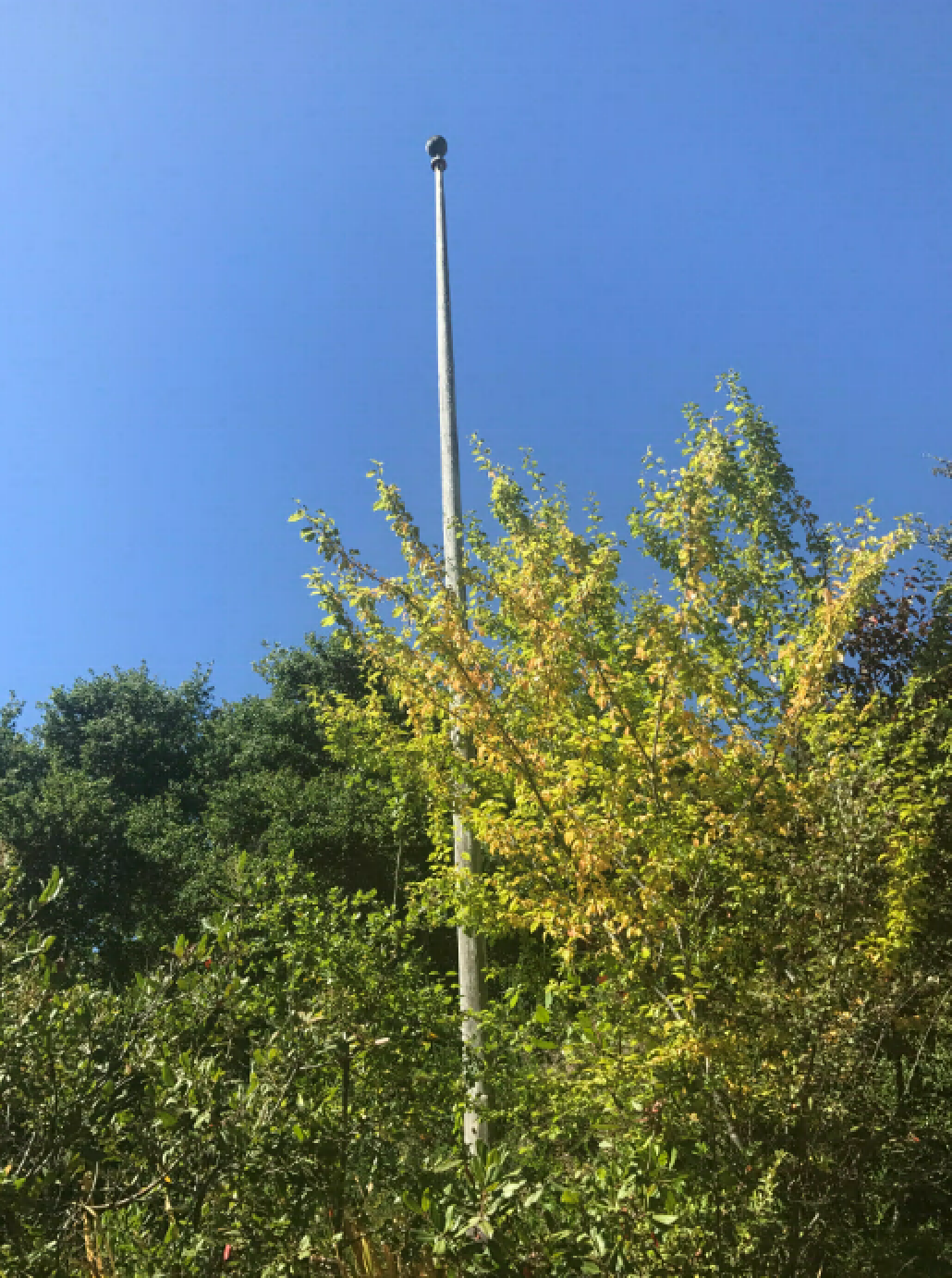
The club’s flagpole still stands.
I showed this post, modest as it is, to my friend. “Let me get this right,” he said. “A group of neighbors get together and with a little City money build a clubhouse for cultural events. No developer. No profits.” Check. He continued. “And then the federal and state government put people to work building the Rose Garden. No developer. No profits. Volunteers Open to everyone.” Check He shook his head. “Different time then. It was by the public, for the public. Not the money machine. It would have made a great Quirky Berkeley art gallery, no?”
He pulled out his copy of Harvey Smith’s brilliant Berkeley and the New Deal. It is a good antidote to today’s development boom.
What does he think about the post?


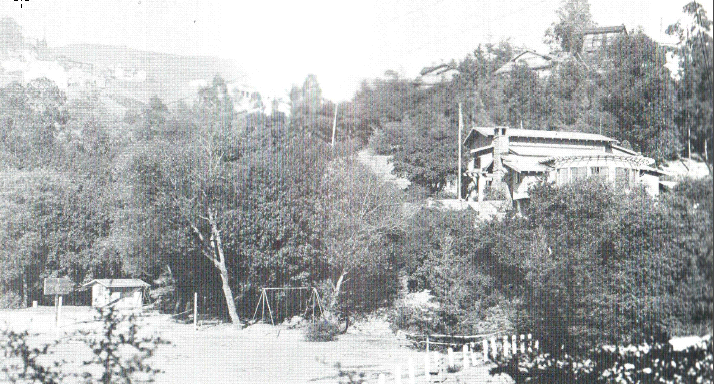
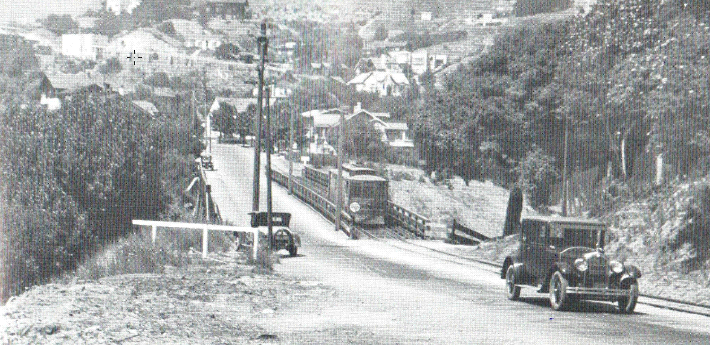
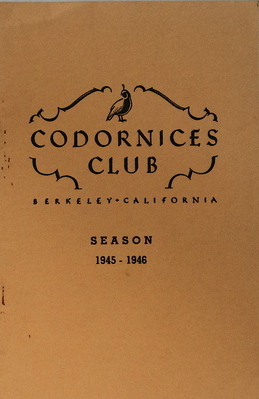
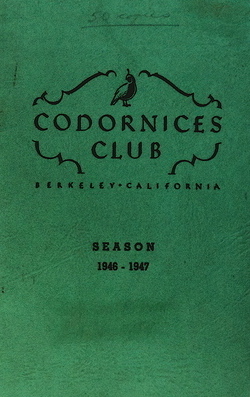

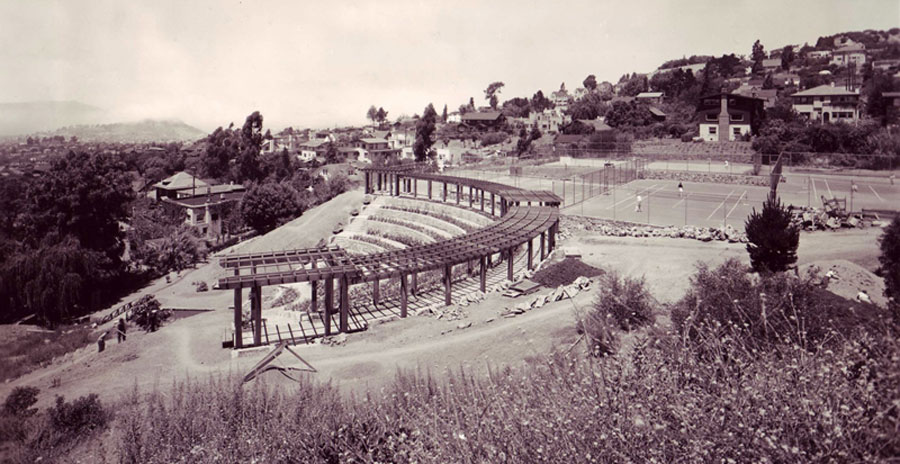

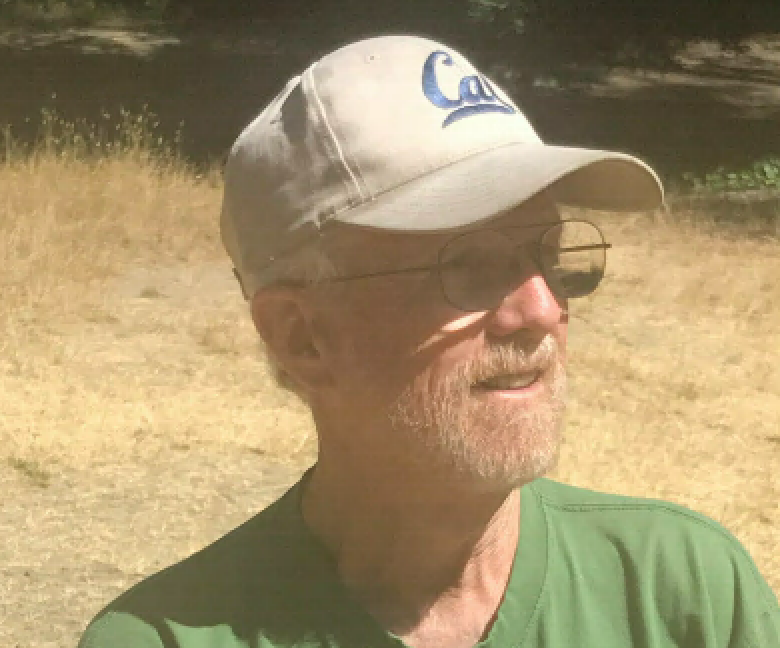

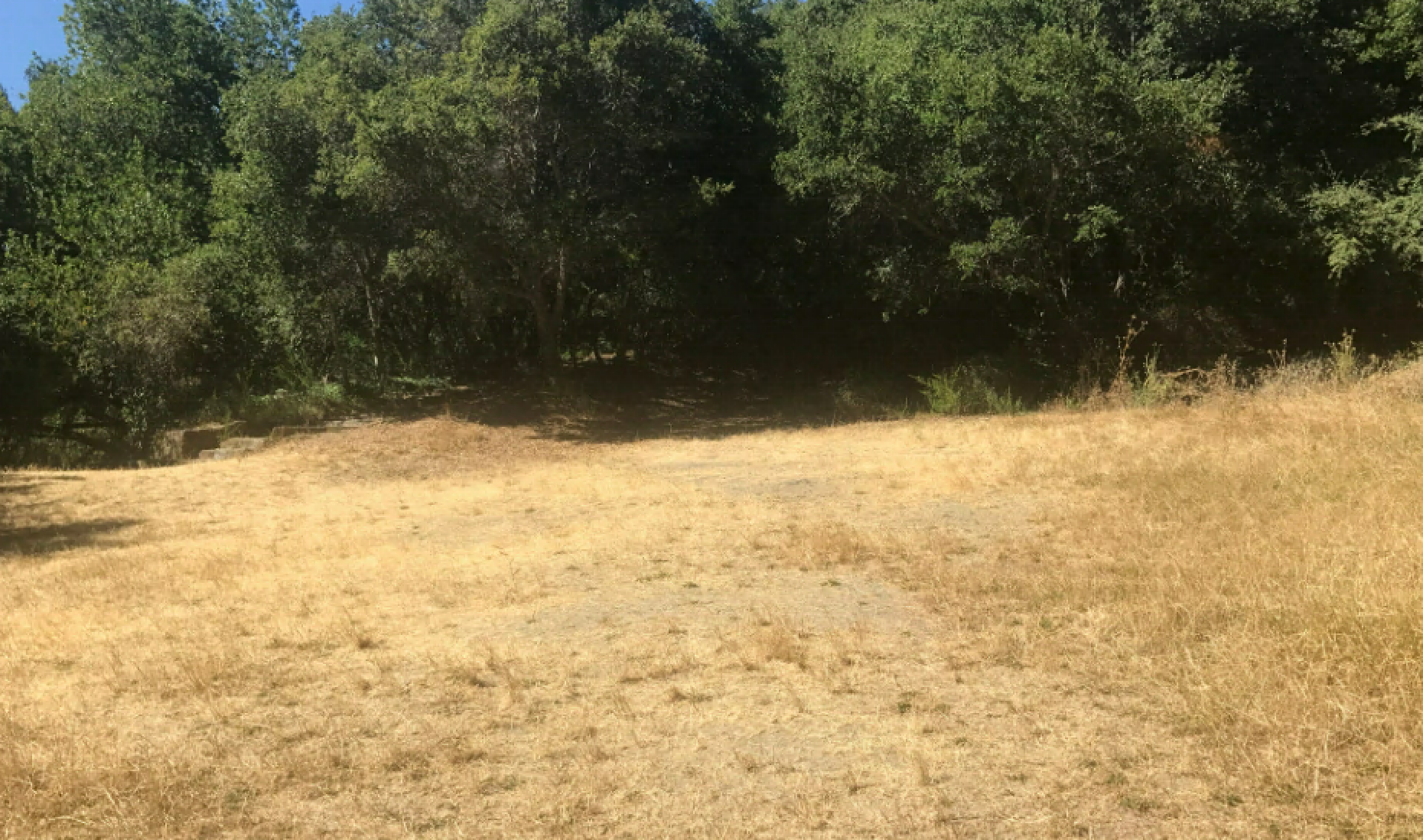
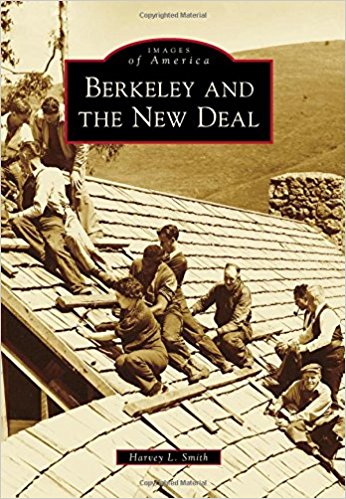
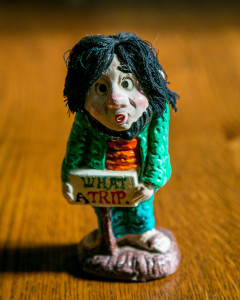
great photos! My ex grew up close to the park and played there often.
Joe
Dear Tom,
Another winner post. My parents folk danced there and my grandmother, from
Minnesota, who would stay with us for the winters, saw the newly completed Rose
Garden and fell instantly in love with it. We used to walk up there together to smell
the roses. In 1937, for the opening of the G.G.Bridge, my parents and my grandmother
walked across the span. As kids, we considered that Codornices and the Rose Garden
part of our extended ‘backyard’ just up the hill from our real backyard, Live Oak Park.
You go, Tom!
Penny
I live for stories like yours. All good wishes to you and Dorothy for the new year – Tom
I know you wanted to focus on the clubhouse and you’ve done a good job. But you really missed the park itself.
There were (are) walking trails that go up the canyon and steps on the north side of the park that go up to Tamalpais Rd. The playground was dirt with home plate at the southwest end. The basketball court was in the northeast corner next to “the shack,” where balls and bats, etc. were stored (there weren’t many). The side of the shack was covered with the carved names, nicknames and initials of the kids that hung out there. Most of the time there was no “rec leader” on duty so we learned how to take the door off to get to the basketballs. The pole holding backboard at the south end of the court was bent a bit when one of the local kids (I won’t mention names) ran into it while spinning doughnuts one night. It was a wonderful place to grow up.
Thanks for sharing this. It’s my old neighborhood, too. I grew up on Glen, just below the Rose Garden, and remember the slide, playing in the park and the Rose Garden and also some Girl Scout activities, but don’t remember the clubhouse.
My parents, Carl and Lucille Hendel ,belonged to the Codornices Club in about 1954-60. I remember them being in a play, “Outward Bound” where in the end you realized all the people on this ship had recently died. I remember the park had playground equipment.
We lived in El Cerrito just above the abandoned Peralta Adobe, which later became El Cerrito Plaza with Capwell’s as its major tenant. There was a drive-in movie theatre there also. I could see it from my window, but I never figured out how to sound into my room. In high school I convinced my parents to buy a house in Kensington on the Arlington.
I grew up on Keith Ave after the war and used to walk to the park by taking a short cut from there to Euclid in order to play at Codornices park (which we pronounced Cordonices). I have a vague recollection of my mother trying to take me to a ballet class at that very club house! In my memory, I recall that big, round room and the wonderful, tall windows looking out toward the bay. Some part of that experience was too much for my little toddler self, and my mother never tried to register me in a ballet class again…..:-((( I’m on line now trying to find out what year the slide was first put in. We loved it from day 1 and I am soooo glad that now my grandchildren can still ride down it. Yes, the Codornices clubhouse should have been preserved! Square dancing at John Hinkel Park is one of my fondest memories. A similar use for the clubhouse might have saved it. I am so happy to read that fish have returned to Codornices Creek!!!
To DeAnna Malcolm’s question: I grew up a block away from Codornices Park, in the 1950’s. Many neighborhood kids would play at the park, whose configuration is exactly as Leo describes, but he didn’t mention a couple of things. Just north of the little clubhouse (which was staffed during after-school hours and on weekends), there was a kind of merry-go-round metal turntable, an octagonal platform about 8 feet in diameter, 2 feet high, which rotated freely, according to how the kids would push it. A really great and not particularly safe fixture! The tunnel underneath the roadway, connecting to the tennis court area and Rose Garden, was just about as it is today, just much darker, and very scary for younger kids. (It was illuminated by one bare lightbulb which almost always was broken/missing.) There was NO slide until around 1960. Prior to that time we just would slide down the steep dirt slope at that spot, between the protruding roots of the trees, using flattened cardboard boxes as sleds, and clambering back up on the more foot-navigable area to the south (where the steps are now). At some point some rascally kids got the bright idea of making the slide path longer by digging out a tunnel-trench at the top, when nobody was paying attention. This eventually collapsed, and the city stepped in to construct a concrete slide so that the kids wouldn’t wreck the whole area. But besides being less fun, the slide was slow. So we kids quickened the ride by sitting on wax-paper. That soon made the slide very quick on its own, and now much fun again. Within weeks some kid had zipped off the side at the bottom curve and broken an arm. So the City put up a concrete guard-wall at that spot, making it too tame for us again. In other words, it was a continuous battle between thrill-seeking youngsters and safety-minded adults.
Similarly, it was a traditional bravery-challenge to break the rules and traverse the creek culvert all the way from by the parking lot to the bottom of the Rose Garden (a long, dank, dark feat). I never dared. Of course the grownups eventually blocked both ends of that secret passage!
I was sad when they reconfigured the park (around 1970?), replacing the baseball field with the relocated basketball court (which allowed the current level picnic-friendly lawn where the asphalt basketball court had been. Soon after that, I recall, EBMUD bought some of the land, and the current baseball field (named “Jane Hammond Field” in 2015) to the south was built up. That’s a great asset, of course – – it used to be just a wild-brush hillside between the trees.
About the Maybeck Clubhouse – – I remember that it was a magnificent-looking structure, used for events very frequently — folk dancing, theatrical activities, scout meetings, etc. It was a great shame when it disappeared!! Incidentally, the tall anti-deer fence around the Rose Garden came much later. I guess in the 1950’s the deer hadn’t learned to wander down to the munchable opportunities there; we hardly ever saw deer in the neighborhood, let alone the coyotes that pass through frequently now.
Thanks to Tom Dalzell for creating this webpage!!
Troop 23. What a great place it was for a Scout troop to meet.
CORRECTION: I worded part of my post exactly backwards!
Namely, in the 1970’s the land to the south of Codornices park was purchased FROM EBMUD by the City of Berkeley, not “by EBMUD”. So the City could build the ballfield on its own property. I don’t know if the City also owns the rest of the park as well – – it seems originally they were leasing it from the Water Company (which was superseded by EBMUD).
Please amend my post accordingly (along with whatever other edits you want). Thanks, – Jonathan (THIS IS NOT A NEW POST, JUST A NOTE TO THE MODERATOR).